


The go-to florist for some of the chicest design shops around (e.g, Roman and Williams, Shop Quarters, Somerset House), Alex Crowder is known for crafting arrangements that feel more poetic than pretty (though they certainly are that, too). She grew up “in the Ozark mountains in Missouri building fairy homes out of sticks, leaves, wildflowers, and mud,” and today, as the founder of Field Studies Flora, she continues to bring that sense of joy and wonderment to her creations.
The only difference is that this time, her playground is the whole New York City region. “We want our work to look like our surroundings in real-time as we source almost-entirely from within a 200 mile radius of the city. This means we get to collaborate with a variety of small and considered vendors from foragers and farmers to gardeners,” she tells us of her Brooklyn-based studio. And, as always, she “aims to champion the weirdest and most wonderful parts of nature that are often overlooked or discarded. Wildflowers, weeds, seed pods, branches, and grass (so much grass!). Rather than making picture perfect arrangements, we strive to echo the ecosystem from which the flowers were sourced.”
Below, Alex gives us a peek into her flower-obsessed brain.
Photography courtesy of Alex Crowder.
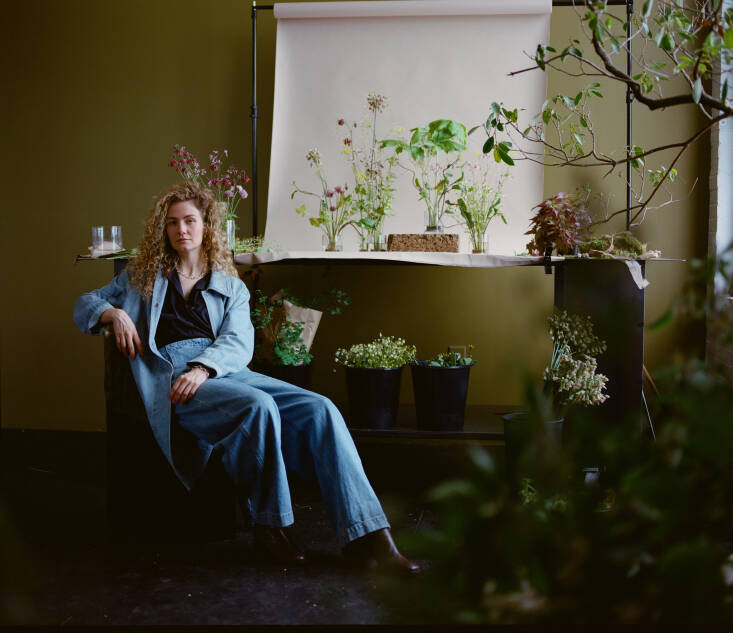
My grandparents lived on a farm in rural Missouri, where my grandfather’s father had farmed before him. They leased out much of it to corn and soybean growers, but there were a few areas of undisturbed land: a dense forest where I was once hypnotized by a glen full of bluebells, two ponds bursting with cattails and snapping turtles, and the gardens of my great-grandparents, which were overgrown with grass and weeds. Those dilapidated gardens housed lilies and irises encased in grasses and bedstraw with stone borders that had fallen down over time. I’ve been trying to replicate that aesthetic ever since.
The Book of Wildflowers by William Joseph Showalter, published in 1924. Showalter’s nature writing is equal parts informative and comedic. We have a copy in the studio that’s wrapped in craft paper to protect the original cover. When people visit the studio who seem as nerdy about plants as we are, I love showing them the color etchings and humorous descriptions of flowers.
Overgrown bug hotel.
Queen Anne’s lace en masse at sunset, or just after.
Monocropped roses for the floral industry. They’re personality-less, straight-stemmed, thornless, with obtrusive blooms and no scent. Their growing is often outsourced to farms in the global south with poor labor practices and little to no regulation on chemical use. This practice is extractive rather than collaborative and is a far cry from the twisted, barbed, and gorgeously-scented beauty of a wild or garden rose.
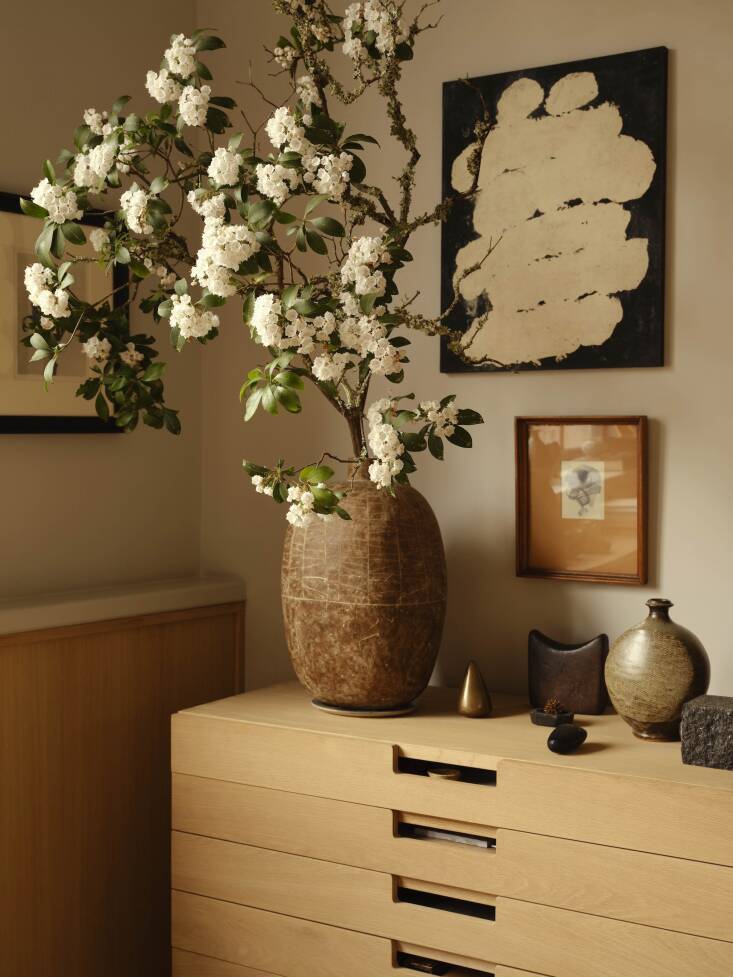
Mountain laurel! I’m equally enamored with it as a tree in the woods or as a cut branch for arrangements. There’s nothing quite like its twisted branches that rise and and fall with an almost sensual rhythm. Its sticky geometric cup-shaped blooms make a real impression.
I’m not in control.
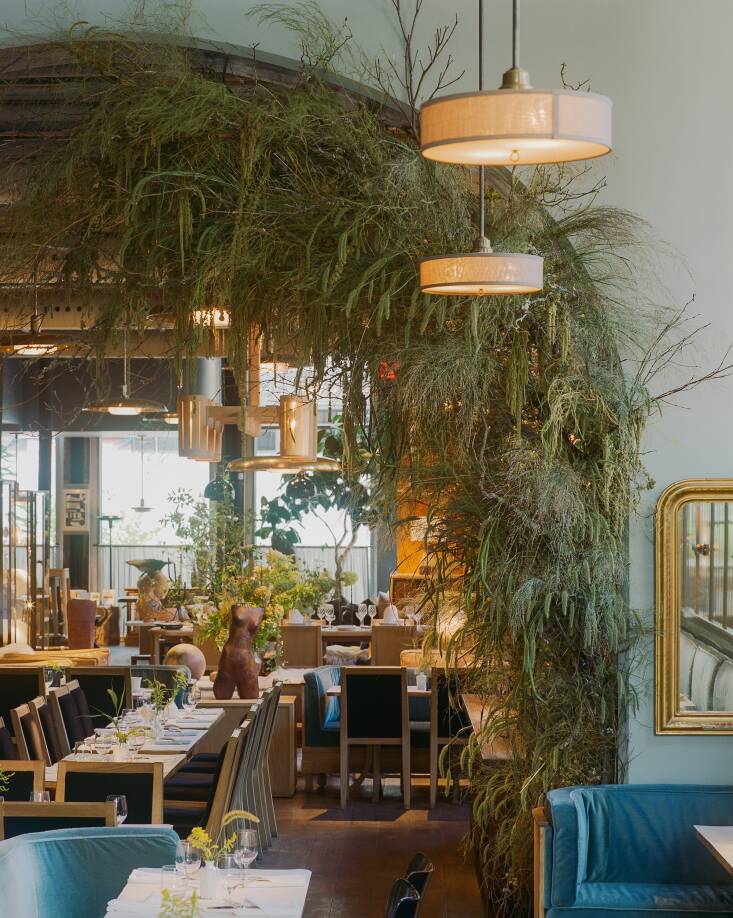
Control! Overly restrained floral or garden designs look strangled and synthetic.
Place for you to sit; to sit for as long as you can and observe the millions of tiny miracles that occur within the natural world. It’s a good balm for uncertain times. Resilience is a wonder to witness.
Stone. I don’t think there is anything more romantic than an ancient dry stack stone wall.
My books. The collection we’ve cultivated in the studio library is a favorite tool, for both me and my team. I derive so much pleasure from reading and researching—it greatly informs my work.
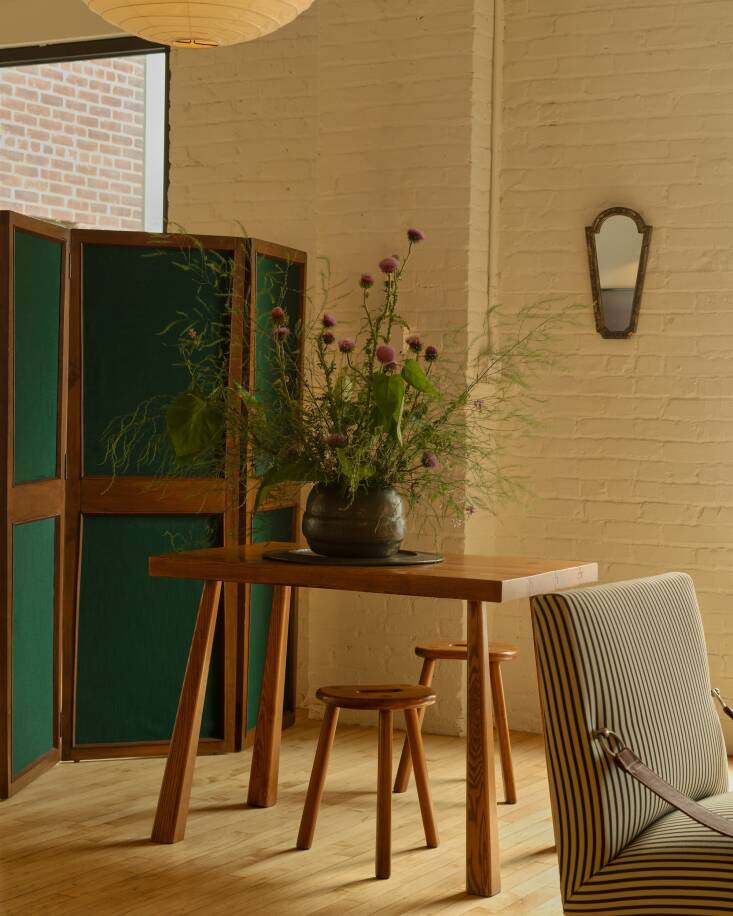
Floristry full stop, to any and every degree. From a single stem in a bud vase on your side table to bowls of lichen around the house, any wink of nature inside reminds us to go back out where we belong. You don’t have to be a florist, you just have to be curious.
Currently, Altadena Seed Library.
A natural swimming pool. [See Hardscaping 101: Natural Swimming Pools.]
Acadia National Park in Maine. There’s nothing like it. The ferns, the lichen, the stone. It’s prehistoric.
Learning and long-term thinking. How will this change with time? It’s so different from floristry, in all the ways I need.
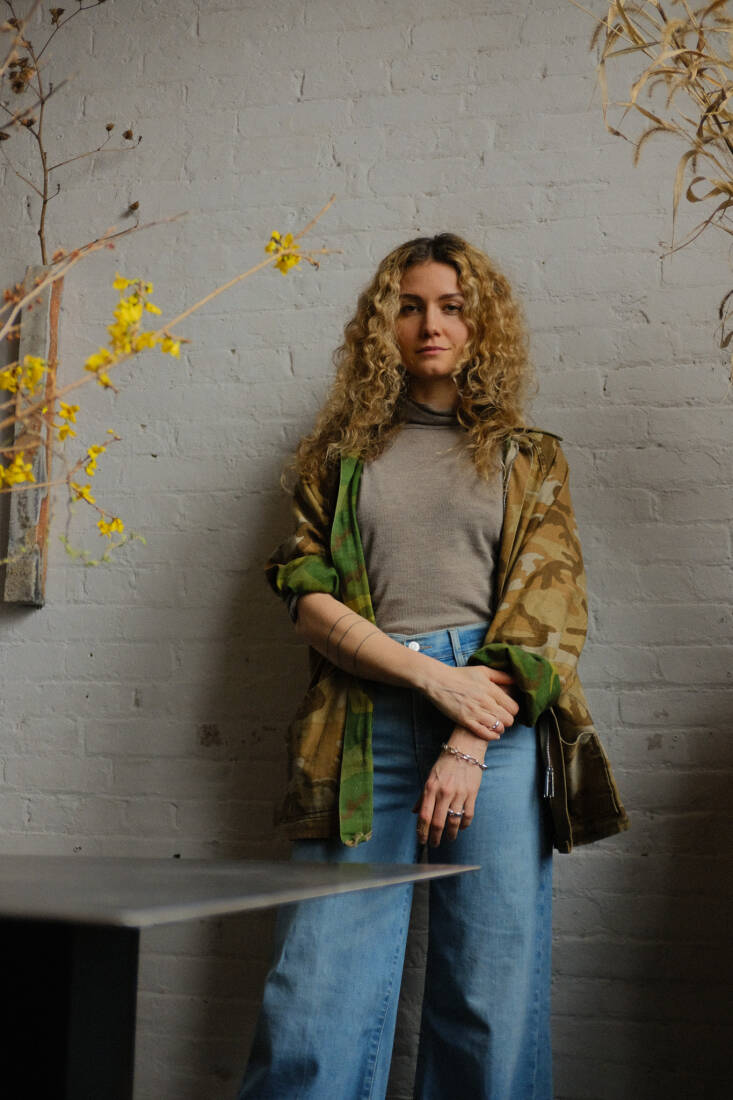
Yes! I have been curating a collection of garden and floristry tools for Slow Roads and the first collection comes out on Earth Day. It was an exciting project to work on as a fan of theirs and because it’s a great platform to showcase a more expansive take on “tools.” We included things like favorite out-of-print-books from our collection, a vintage magnifying glass from Hermes, a battery jar as a vase, and macroscopic framed prints from Karl Blossfeldt, to name a few.
Thanks so much, Alex! (You can follow her on Instagram @fieldstudiesflora.)
For our full archive of Quick Takes, head here.
v5.0
When you register as a free Member of the Remodelista family of websites (Remodelista, Gardenista, and The Organized Home), you gain access to all current posts plus 10 archived posts per month, our internal bookmarking tool, and the community bulletin board.
Member benefits include:
For $5/month ($59.99 paid annually) you'll enjoy unlimited, ad-free access to Remodelista, Gardenista, and The Organized Home and all the benefits of Membership.
Subscriber benefits include:
For $5/month ($59.99 paid annually) you'll enjoy unlimited, ad-free access to Remodelista, Gardenista, and The Organized Home and all the benefits of Membership.
Subscriber benefits include:
Benefits include:
For $5/month ($59.99 paid annually) you'll enjoy unlimited, ad-free access to Remodelista, Gardenista, and The Organized Home and all the benefits of Membership.
Subscriber benefits include:
When you register as a free Member of the Remodelista family of websites (Remodelista, Gardenista, and The Organized Home), you gain access to all current posts plus 10 archived posts per month, our internal bookmarking tool, and the community bulletin board.
Member benefits include:
If at any time you want to become a Subscriber and enjoy unlimited, ad-free access to all our content, just go to the My Account link and choose Subscribe.
Advertising funds our work at Gardenista and helps us provide you with a daily dose of garden inspiration & design. We hope you’ll consider disabling your adblocker for Gardenista so we can continue our mission: a well-designed garden for all.
Thank you for your support.
Have a Question or Comment About This Post?
Join the conversation